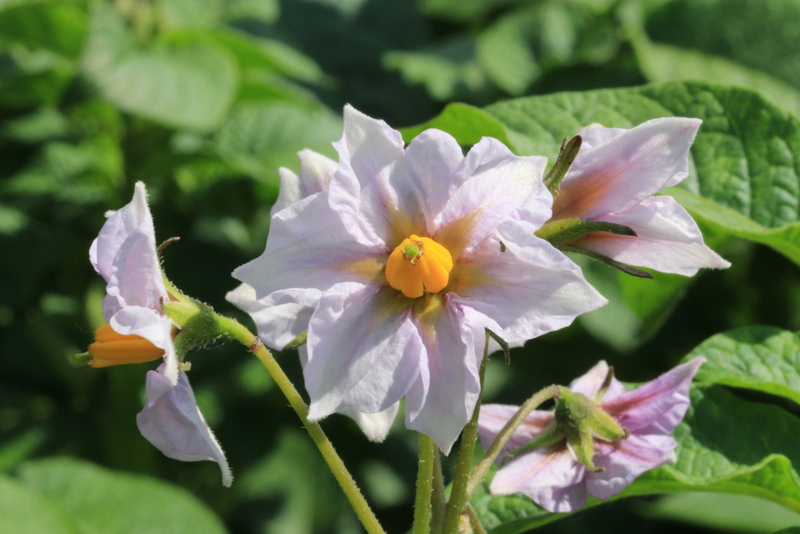Potato Extension
Air Temperature Inversions: Causes, Characteristics and Potential Effects on Pesticide Spray Drift
A new article from NDSU Extension Service on air inversions is a great resource for growers and pesticide applicators. It’s particularly frustrating because some of the seemingly best weather conditions for pesticide application are often the worst. That is because those conditions are caused by air temperature inversions. Air temperature inversions provide near-perfect conditions for tiny, aerosol-size droplets to drift away from their targets
Blemish of Tablestock Tubers
North Dakota and Minnesota are known for their red-skinned, white-fleshed potato varieties. Recent data shows an increase in consumption of red- and yellow-skinned potato varieties in the United States. One of the challenges of providing a high quality potato is to produce tubers free from blemishes because consumers will “buy with their eyes” as they naturally gravitate to tubers free from blemishes. Silver scurf disease is the most important cause of potato tuber blemish. It is most often caused by the fungal pathogen Helminthosporium solani, but in recent years black dot, caused by the fungal pathogen Colletotrichum coccodes, has also become an important cause of blemish.
Herbicide Carryover in the Soil, What Does it all Mean?
This time of year when growers are looking for fields to plant potatoes, knowing the previous herbicides can determine if a potato crop can be planted in that field. Herbicide persistence into the next growing season can restrict potato production. It is easy to send a soil sample to a laboratory and have it tested for herbicide carryover in the soil. When the results come back I often get asked what does “x” parts per billion (ppb) mean?
Effect of Response of Rejuvenate on Potato Seed: Report from the NPPGA Field Day 2013
A report from a one-year study of Rejuvenate that was completed at Inkster, ND in 2013. Rejuvenate is a product that can help to reduce stem number on seed tubers. In this study the untreated averaged 3.1 stems per tuber and Rejuvenate reduced this to 2.6 at the higher rate showing promise for controlling stem number when they are too large.
Tips for Growing Potatoes in the Garden
As spring approaches many people are interested in growing potatoes in their garden. Below are links to some Extension publications and books on growing potatoes in the garden.
Growing Potatoes in the Garden
As spring approaches many people are interested in growing potatoes in their garden. Below are links to some Extension publications and books on growing potatoes in the garden. Please contact me (on the right of the page) if you have further questions.
International Crop Expo Presentations
Some of the presentations from the potato section at the International Crop Expo in Grand Forks, ND are now available.
Fumigation Recertification Workshop for Minnesota
Minnesota pesticide applicators licensed in Categories A and O and who became licensed in O: Soil Fumigation for the first time in 2013 need to attend an MDA approved recertification work- shop in 2014. MDA requires attendance at an approved O: Soil Fumigation recertification workshop once every two (2) years starting the year following the year of initial license in Category O. Attendance fulfills the recertification requirement in Categories A and O by licensed commercial and noncommercial pesticide applicators.
NPPGA Research Reporting Conference Presentations
Most of the presentations given at the February 18 NPPGA Research Reporting Conference are available. Topics include potato entomology, skin set, sugars, breeding, pathology, agronomy, and fertility.
NPPGA and MN Area II Research Reports 2013
Research reports from the researchers at North Dakota State University and the University of Minnesota from 2013 are now available. Research has been in the areas of potato breeding, pathology, agronomy, weed science, entomology, and other areas focused on improving potato production in the upper Midwest.
Document Actions





